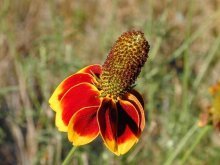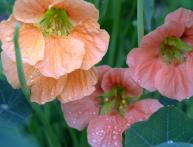Ratibida columnar or how to grow Mexican hat in the garden
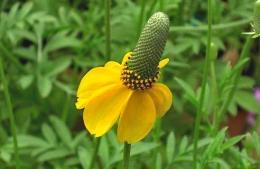
Information article about the ratibida columnar plant. Description of the plant, agricultural technology for planting, cultivation. Using ratibida in the garden, varieties. Perennial flowering plants have always attracted land owners and gardening specialists.
Particularly popular are plants from the category unpretentious, those about whom it is customary to say that they were imprisoned and forgotten. Ratibida columnar is from this category. It grows without requiring care, and every year it pleases the eye with its flowering. Let's try to find out what plant is behind this name.
Content:
Ratibida columnar or Mexican hat
The homeland of the plant with an unusual name is North America. In the wild, it is found from the prairies of Mexico to Canada. Ratibida columnar belongs to the genus Ratibida from the Asteraceae family. Life form - herbaceous perennial.
When growing wild, it prefers to settle in dry places, along roads and railways, and grows successfully in the prairies. Near human habitation it can inhabit abandoned areas and wastelands.
The roots of the plant are powerful, taprooted with branches. Ground shoots are from 0.6 m to 1.2 m high. The stems and leaves are covered with glandular hairs. The leaves are green with a grayish tint.
The shape of the leaves is elongated, the leaf blades are pinnate or divided. Flowers of two types. The marginal reed flowers are arranged in one row. Most often there are up to seven of them.
Reed flowers on an open inflorescence are bent back and down. Their color is most often yellow, brown, purple-edged brown, or red-brown. The median tubular flowers form a convex disk or cone. The middle flowers bloom gradually, from bottom to top. After 7-14 days, the length of the cone can be 4-5 cm.
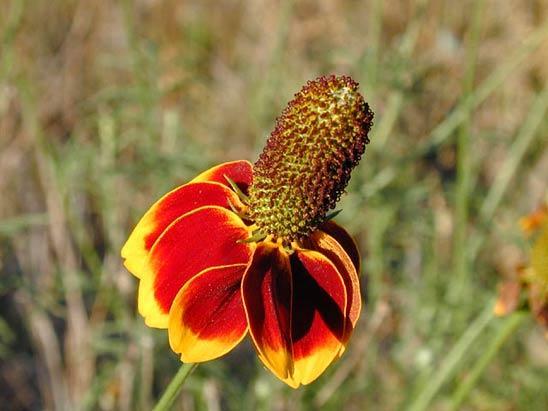
At the beginning of flowering, the inflorescence is similar to the flowers of a related echinacea and rudbeckia. The difference is in the convex middle of the flower. The shape of the flower is reminiscent of Mexican headdresses. In its homeland in Mexico, the plant is called the Mexican hat. There are other names:
- flower thimble
- coneflower
- ratibida elongated
- ratibida columnaris
Flowering time is the second half of summer, autumn. It has been widespread in cultural floriculture since the beginning of the 19th century. Recently it has been used in landscape design when decorating a site in a natural style. It is grown in flower beds and along garden paths.
Common varieties:
- Sombrero - reed flowers are burgundy-yellow, 3 cm long, the middle flowers are brown-black, form a cone with a diameter of 1 cm, a height of 3 cm.
- Prairie flower - reed flowers are yellow, the middle ones are brown, the diameter of the inflorescence is 8 cm.
Let's try to figure out how multiplies this flower and where is the best place to plant it/
How to plant ratibida in the garden
Selecting a location
The plant is not at all whimsical. Grows well in open sunny places. Adapts to any type of soil, but it is best to choose areas with loamy, slightly alkaline soils for ratibida.If the soil is heavy and clayey, then sand must be added. Winter hardiness is good; even when frozen, plantings are resumed by self-seeding.
Reproduction
The main method of propagation is sowing seeds in open ground. You can also use young plants grown by self-seeding. Dividing the bush is possible, but it is quite difficult to divide the tap root.
Three options are possible sowing:
- before winter
- in the spring on frozen ground
- through seedlings for flowering in the year of planting
For spring sowing, the ratibida bed is prepared in the fall. When growing through seedlings and for spring sowing, you need to keep the seeds for 5 weeks on the bottom shelf of the refrigerator. When sown in autumn, the seeds undergo natural stratification.
Video about ratibida flower seeds:
The sowing bed is dug up using a spade in the autumn. When digging, you can add wood ash, a glass per square meter is enough. m., you can add a bucket of compost. After digging, they pass through the bed with a rake to crush lumps of earth. Before winter, seeds are sown superficially. This can be done in rows, placing them at a distance of 20-25 cm from each other. After this, the seeds are covered with a layer of sand of 1.0 cm - 1.5 cm. The sand can be pressed down with branches.
In spring, sowing is done immediately after the snow melts on the frozen ground without embedding in the ground. In warm regions, spring sowing time occurs at the end of February - beginning of March. In temperate climates, time sowing - end of March or first ten days of April.
Sowing of seedlings is carried out in mid-February. Since the plant does not tolerate transplantation well, it is better to do it immediately into individual pots, which are covered with film and kept in good light. Shoots appear in about two weeks.
Features of growing ratibida
When growing ratibida, the grower should not have problems with the seeds. Having planted it once, you can harvest the seeds yourself in the fall. In mid-September, dried boxes are collected for this purpose. By crumbling them over a piece of paper, you get seeds.
You can also plant young seedlings that have grown as a result of self-seeding. Important! You need to dig them out carefully, together with a lump of earth. The plant needs to be watered only in very dry summers. It tolerates moderate drought well.
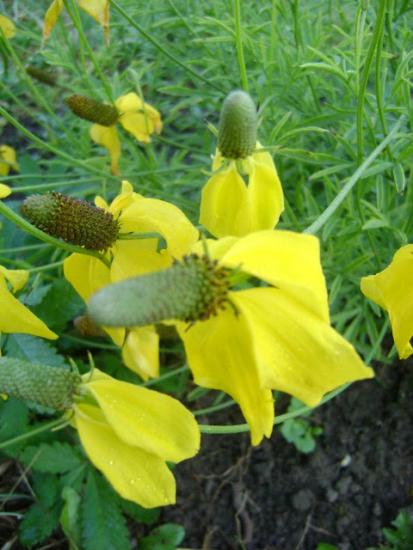
The plant does not need frequent feeding; if applied in excess fertilizers its green mass begins to increase, and flowering is either sparse or does not occur at all. Tall varieties of ratibida are used for cutting into bouquets. They cost very well, maintaining a fresh appearance for up to 10 days.

